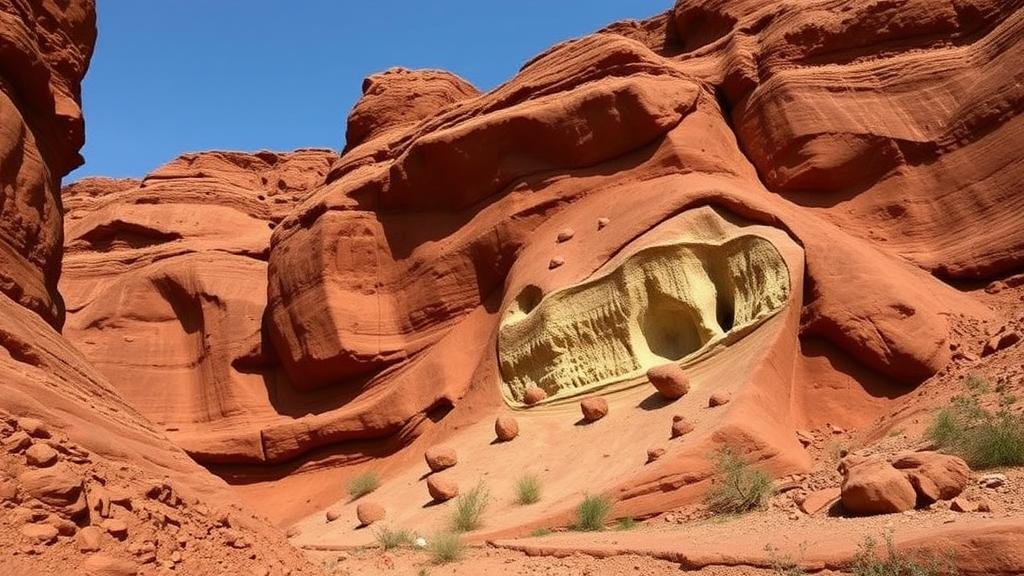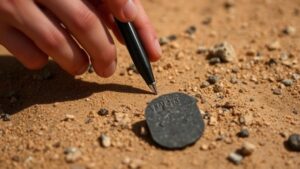Searching for dinosaur eggs fossilized in China’s red sandstone cliffs.
Searching for Dinosaur Eggs Fossilized in China’s Red Sandstone Cliffs
The quest for dinosaur eggs has captivated paleontologists and rockhounds alike, with China’s red sandstone cliffs emerging as a prominent hotspot for fossilized finds. This article aims to provide a thorough insight into the nature of these discoveries, the geological backdrop against which they are found, and practical tips for aspiring collectors.
The Geological Significance
China’s red sandstone cliffs primarily date back to the Late Cretaceous period, approximately 145 to 66 million years ago. These cliffs are part of several geological formations where sedimentary deposits preserved various dinosaur eggs. Notably, the嵩山(Songshan)Formation in the Henan province and the Jianchuan Formation in Yunnan are significant sites where numerous dinosaur egg fossils have been unearthed.
- The Songshan Formation is attributed to the early Late Cretaceous, yielding impressive egg clutches.
- The Jianchuan Formation showcases a diverse range of dinosaur eggs, some measuring up to 20 cm in diameter.
These areas are characterized by their distinctive red, iron-rich sandstone that forms a unique landscape. The mineral composition, interbedded with other sediment types such as siltstone and mudstone, plays a vital role in the preservation of fossils.
Among the most famous dinosaur eggs found in China are those belonging to theropods and ornithischians. In paleontological terms:
- Theropod Eggs: Typically elongated and often found in clutches, these eggs are associated with small to medium-sized theropods. One notable example is the oviraptorid dinosaur, whose eggs are often oval in shape reaching lengths of around 15 cm.
- Ornithischian Eggs: These round, robust eggs, primarily discovered in nests, can measure up to 25 cm in diameter, and are often linked to larger herbivorous dinosaurs.
The difference in shape and size serves both a reproductive and a survival purpose, as the environment impacted how dinosaurs laid and incubated their eggs.
Tips for Rockhounds and Collectors
For those inclined toward collecting these fossils, several practical tips should be considered:
- Research Local Laws: Always familiarize yourself with the legal framework regarding fossil collection in the region. In many areas, fossil hunting requires permits or is strictly regulated to protect paleontological resources.
- Safety First: When exploring the cliffs, ensure that you wear appropriate gear. Good footwear and protection from the sun and sharp rocks are essential.
- Field Tools: Equip yourself with tools such as a hammer, chisels, and brushes specifically designed for fossil excavation to carefully remove surrounding rock without damage.
Field Work: Practical Steps
Engaging in field work requires methodical planning. Here are the steps to enhance your fossil hunting experience:
- Scout for Locations: Identify popular fossil sites through geological surveys or local rockhound forums.
- Staking Your Claim: Once on-site, take time to observe the rock formations. Look for areas where loose sediment might indicate previous fossil exposure.
- Extraction: Using your tools, gently chip away pit features while trying to preserve the eggshell structures. Document your finds meticulously with photographs and notes about the location.
Potential Challenges and Considerations
Like many outdoor pursuits, fossil hunting comes with its challenges. Complications may include:
- Environmental Conditions: Weather can change rapidly; plan your trips accordingly and keep an eye on forecasts to avoid hazards.
- Conservation Ethics: Respect the environment and refrain from over-collecting to ensure sustainability of the site.
Conclusion
The allure of discovering dinosaur eggs in the stunning red sandstone cliffs of China is not merely about the thrill of the hunt; it represents a bridge to understanding Earths prehistoric past. With diligent preparation, a respect for geological laws, and an appreciation for conservation, rockhounds and collectors can make meaningful contributions to paleontology while enjoying a fascinating hobby.
Remember, whether you’re an amateur or a seasoned collector, every fossil tells a story, and every moment spent in pursuit of these historic treasures is part of a larger narrative about life on our planet billions of years ago.


